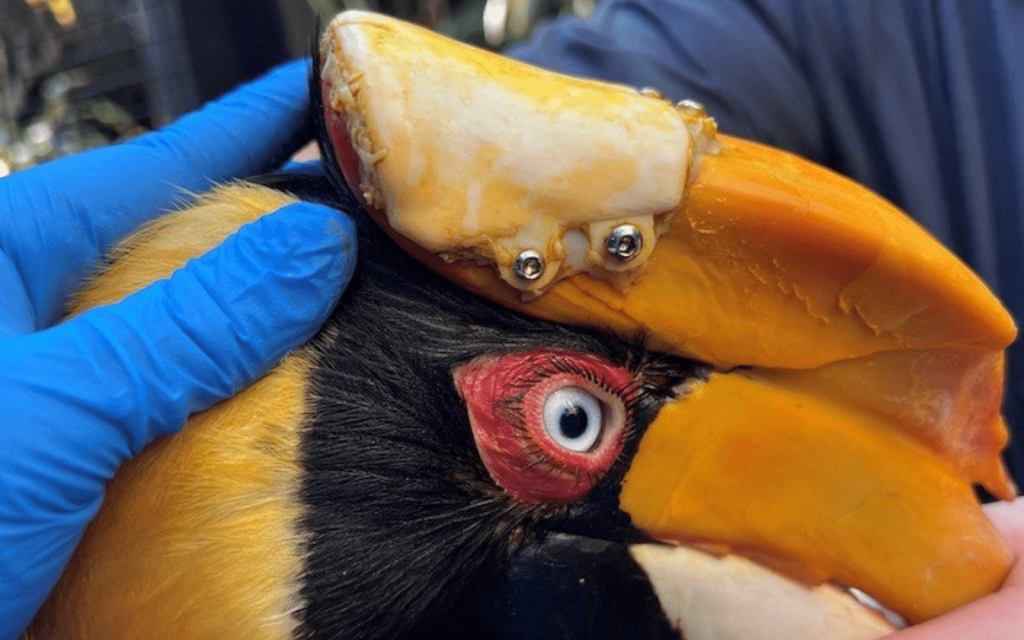Formlabs, a 3D printing company, is getting involved in wildlife preservation, and we couldn’t be happier about it. An Indian hornbill named Crescent recently received treatment from Formlabs and a group of University of South Florida researchers.
Crescent was diagnosed with possibly-fatal cancer in her beak that required the removal of part of her bill. This was to be replaced with a new 3D-printed section. ZooTampa announced yesterday that the operation was successful.
3D Printing and Saving Lives
Formlabs used a ‘biocompatible’ resin called BioMed White which is safe for humans and wildlife when used either internally or externally. A part of Crescent’s bill was recreated to fit the gap in her casque – the ridges that stick out around a hornbill’s beak.
“Clinical literature has shown improved outcomes when patient-specific prosthetics, medical devices, and surgical guides have been used with human patients,” said Formlabs’ director of medical market development, Guarav Manchanda. “We’re thrilled that our technology was also able to bring these benefits to Crescent.”
The procedure for Crescent was simple. A CT scan identified which parts of the bill were infected. These parts were scheduled for removal, as far as was possible. Using the scan, researchers created a 3D model of the beak, thus allowing the 3D printer to create the replacements needed.
Crescent has reportedly recovered quickly and is rapidly adapting to life with a brand-new beak. She even arranged the colouring herself. This was done via her preening glands, which stained the prosthetic yellow.
What else?
Formlabs use a form of printing called additive manufacturing. This allows objects to be created in layers and assembled after the fact. It remains too expensive to print this way with conventional 3D printing materials, but it’s well suited for creating custom medical implants. Implants may be tailored for specific patients, offering considerable advantages when it comes to recovery.
3D printing is one of the fastest growing industries, with the medical field being a particular benefactor. In recent years, 3D printing has enabled a host of life-saving procedures. These run from dental implants to joint replacements to even more exotic assistance.
Source: CNET




